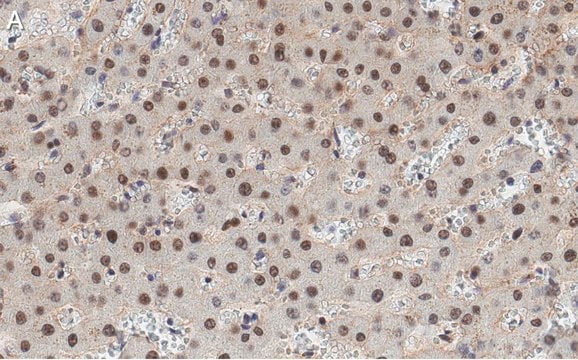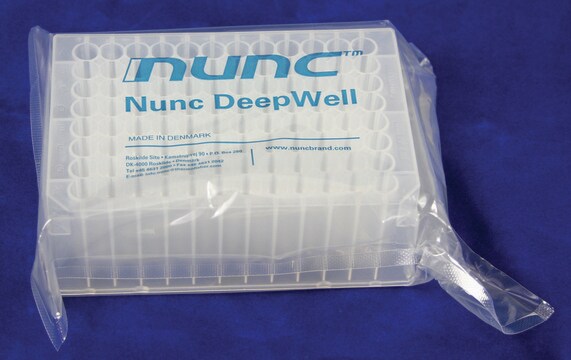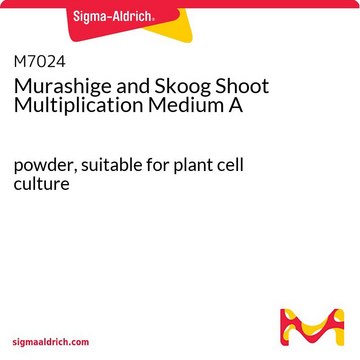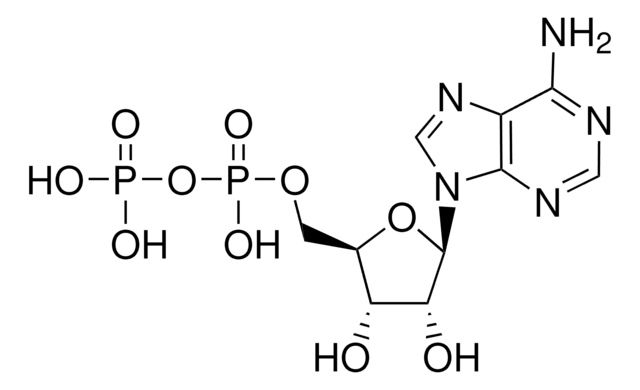추천 제품
일반 설명
Hepatocyte Growth Factor (HGF) is a multifunctional, heparin-binding factor that stimulates the proliferation of liver cells. The cellular effects of HGF are mediated by its receptor, c-Met, that leads to significant activation of ERK, Src/FAK, STAT3 and PI3K signaling. Cells of mesenchymal origin express HGF that stimulates the c-Met expression via an autocrine loop. Various functions of the HGF/c-Met signaling include proliferation, cell survival, motility and adhesion and tissue regeneration. Apart from liver, HGF also mediates regeneration of kidney, lung and gastro-intestines. It is also important for maintaining the insulin production and prevents hypoglycemia, self-repair of cartilage, muscle and skin and hematopoiesis. The HGF/c-Met signaling is reported as a promising therapeutic target in prevention of angiogenesis in cancer and maintaining synaptic plasticity in Alzheimer′s disease
Monoclonal Anti-Hepatocyte Growth Factor recognizes human HGF. The antibody shows less that 0.25% cross-reactivity with recombinant human Macrophage Stimulating Protein (MSP).
Monoclonal Anti-Hepatocyte Growth Factor recognizes human HGF. The antibody shows less that 0.25% cross-reactivity with recombinant human Macrophage Stimulating Protein (MSP).
면역원
purified, Sf21-derived recombinant human hepatocyte growth factor.
애플리케이션
Anti-Hepatocyte Growth Factor antibody may be used for ELISA at a concentration range of 2-8 μg/ml. For immunoblotting, a working concentration of 1-2 μg/ml is recommended.
물리적 형태
Lyophilized from a 0.2 μm filtered solution in phosphate buffered saline with 5% trehalose.
면책조항
Unless otherwise stated in our catalog or other company documentation accompanying the product(s), our products are intended for research use only and are not to be used for any other purpose, which includes but is not limited to, unauthorized commercial uses, in vitro diagnostic uses, ex vivo or in vivo therapeutic uses or any type of consumption or application to humans or animals.
적합한 제품을 찾을 수 없으신가요?
당사의 제품 선택기 도구.을(를) 시도해 보세요.
관련 제품
제품 번호
설명
가격
Storage Class Code
13 - Non Combustible Solids
WGK
WGK 1
Flash Point (°F)
Not applicable
Flash Point (°C)
Not applicable
개인 보호 장비
Eyeshields, Gloves, type N95 (US)
시험 성적서(COA)
제품의 로트/배치 번호를 입력하여 시험 성적서(COA)을 검색하십시오. 로트 및 배치 번호는 제품 라벨에 있는 ‘로트’ 또는 ‘배치’라는 용어 뒤에서 찾을 수 있습니다.
Chunsun Dai et al.
The Journal of biological chemistry, 278(29), 27080-27087 (2003-05-15)
Type I diabetes is an autoimmune disease that results in destructive depletion of the insulin-producing beta cells in the islets of Langerhans in pancreas. With the knowledge that hepatocyte growth factor (HGF) is a potent survival factor for a wide
Shiv Sharma
TheScientificWorldJournal, 10, 457-461 (2010-03-23)
The hepatocyte growth factor (HGF) was initially identified as a protein that promoted growth of hepatocytes. It regulates proliferation and survival of different types of cells. HGF signaling, which is initiated by its binding to a receptor tyrosine kinase, plays
Shinya Mizuno et al.
Frontiers in bioscience : a journal and virtual library, 13, 7072-7086 (2008-05-30)
Hepatocyte growth factor (HGF) and Met/HGF receptor play roles in dynamic growth and morphogenesis during development and regeneration of organs, including the kidney. In the kidney, HGF targets different types of cells, while its biological actions depend on a target
Weon-Kyoo You et al.
BMB reports, 41(12), 833-839 (2009-01-07)
Angiogenesis in tumors is driven by multiple growth factors that activate receptor tyrosine kinases. An important driving force of angiogenesis in solid tumors is signaling through vascular endothelial growth factor (VEGF) and its receptors (VEGFRs). Angiogenesis inhibitors that target this
K Matsumoto et al.
Critical reviews in oncogenesis, 3(1-2), 27-54 (1992-01-01)
Hepatocyte growth factor (HGF) is the most potent mitogen for mature hepatocytes and seems to act as a hepatotropic factor that has not been purified over the past 30 years. HGF was first purified from rat platelets in 1986. HGF
자사의 과학자팀은 생명 과학, 재료 과학, 화학 합성, 크로마토그래피, 분석 및 기타 많은 영역을 포함한 모든 과학 분야에 경험이 있습니다..
고객지원팀으로 연락바랍니다.








